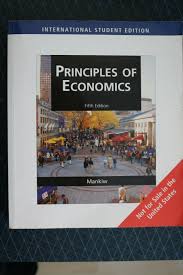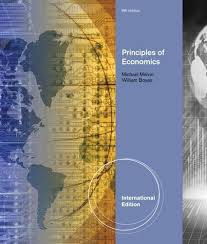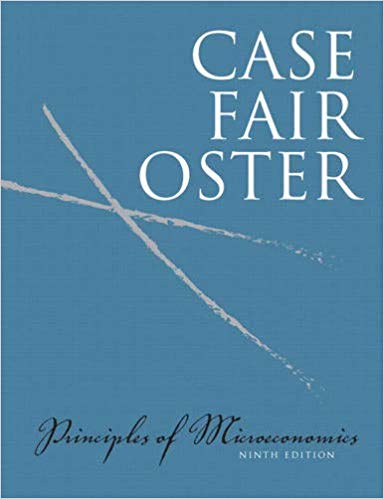Principles of Economics International Edition 5th Edition By N. Gregory Mankiw – Test Bank
Chapter 6
Supply, Demand, and Government Policies
TRUE/FALSE
1. Economic policies often have effects that their architects did not intend or anticipate.
ANS: T DIF: 1 REF: 6-0
NAT: Analytic LOC: The study of economics and definitions of economics
TOP: Public policy MSC: Definitional
2. Rent-control laws dictate a minimum rent that landlords may charge tenants.
ANS: F DIF: 1 REF: 6-0
NAT: Analytic LOC: Supply and demand TOP: Rent control
MSC: Definitional
3. Minimum-wage laws dictate the lowest wage that firms may pay workers.
ANS: T DIF: 1 REF: 6-0
NAT: Analytic LOC: Labor markets TOP: Minimum wage
MSC: Definitional
4. Price controls are usually enacted when policymakers believe that the market price of a good or service is unfair to buyers or sellers.
ANS: T DIF: 1 REF: 6-0
NAT: Analytic LOC: Supply and demand TOP: Price controls
MSC: Definitional
5. Price controls can generate inequities.
ANS: T DIF: 1 REF: 6-0
NAT: Analytic LOC: Supply and demand TOP: Price controls
MSC: Definitional
6. Policymakers use taxes to raise revenue for public purposes and to influence market outcomes.
ANS: T DIF: 1 REF: 6-0
NAT: Analytic LOC: Supply and demand TOP: Taxes
MSC: Definitional
7. If a good or service is sold in a competitive market free of government regulation, then the price of the good or service adjusts to balance supply and demand.
ANS: T DIF: 1 REF: 6-1
NAT: Analytic LOC: Supply and demand TOP: Prices
MSC: Definitional
8. At the equilibrium price, the quantity that buyers want to buy exactly equals the quantity that sellers want to sell.
ANS: T DIF: 1 REF: 6-1
NAT: Analytic LOC: Supply and demand TOP: Prices
MSC: Definitional
9. A price ceiling is a legal minimum on the price at which a good or service can be sold.
ANS: F DIF: 1 REF: 6-1
NAT: Analytic LOC: Supply and demand TOP: Price ceilings
MSC: Definitional
10. A price ceiling set above the equilibrium price is not binding.
ANS: T DIF: 2 REF: 6-1
NAT: Analytic LOC: Supply and demand TOP: Price ceilings
MSC: Interpretive
11. If a price ceiling is not binding, then it will have no effect on the market.
ANS: T DIF: 2 REF: 6-1
NAT: Analytic LOC: Supply and demand TOP: Price ceilings
MSC: Interpretive
12. To be binding, a price ceiling must be set above the equilibrium price.
ANS: F DIF: 2 REF: 6-1
NAT: Analytic LOC: Supply and demand TOP: Price ceilings
MSC: Interpretive
13. A price ceiling set below the equilibrium price is binding.
ANS: T DIF: 2 REF: 6-1
NAT: Analytic LOC: Supply and demand TOP: Price ceilings
MSC: Interpretive
14. A price ceiling set below the equilibrium price causes quantity demanded to exceed quantity supplied.
ANS: T DIF: 2 REF: 6-1
NAT: Analytic LOC: Supply and demand TOP: Price ceilings | Shortages
MSC: Interpretive
15. A price ceiling set above the equilibrium price causes quantity demanded to exceed quantity supplied.
ANS: F DIF: 2 REF: 6-1
NAT: Analytic LOC: Supply and demand TOP: Price ceilings
MSC: Interpretive
16. A binding price ceiling causes quantity demanded to be less than quantity supplied.
ANS: F DIF: 2 REF: 6-1
NAT: Analytic LOC: Supply and demand TOP: Price ceilings | Shortages
MSC: Interpretive
17. A price ceiling set below the equilibrium price causes a shortage in the market.
ANS: T DIF: 2 REF: 6-1
NAT: Analytic LOC: Supply and demand TOP: Price ceilings | Shortages
MSC: Interpretive
18. A price ceiling set above the equilibrium price causes a surplus in the market.
ANS: F DIF: 2 REF: 6-1
NAT: Analytic LOC: Supply and demand TOP: Price ceilings
MSC: Interpretive
19. A binding price ceiling causes a shortage in the market.
ANS: T DIF: 2 REF: 6-1
NAT: Analytic LOC: Supply and demand TOP: Price ceilings | Shortages
MSC: Interpretive
20. When a binding price ceiling is imposed on a market for a good, some people who want to buy the good cannot do so.
ANS: T DIF: 2 REF: 6-1
NAT: Analytic LOC: Supply and demand TOP: Price ceilings | Shortages
MSC: Interpretive













Reviews
There are no reviews yet.